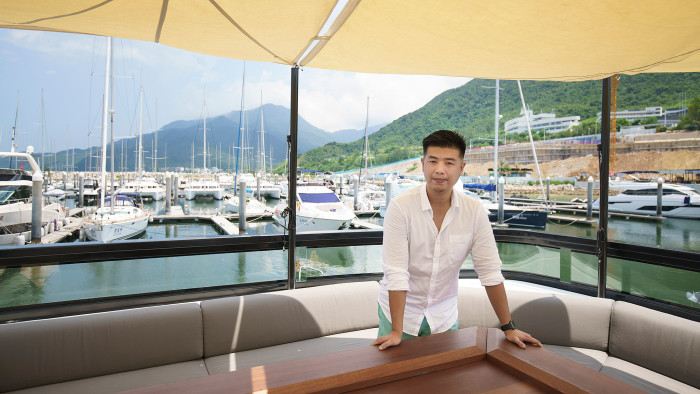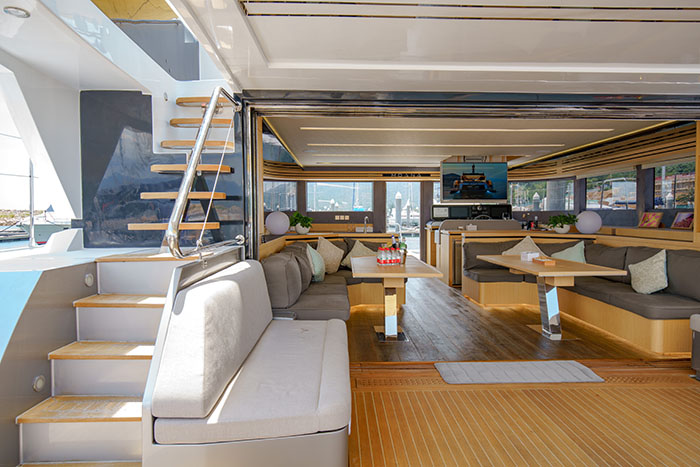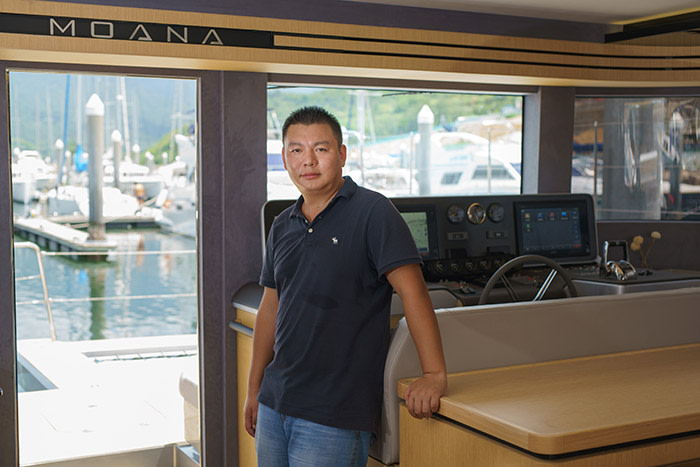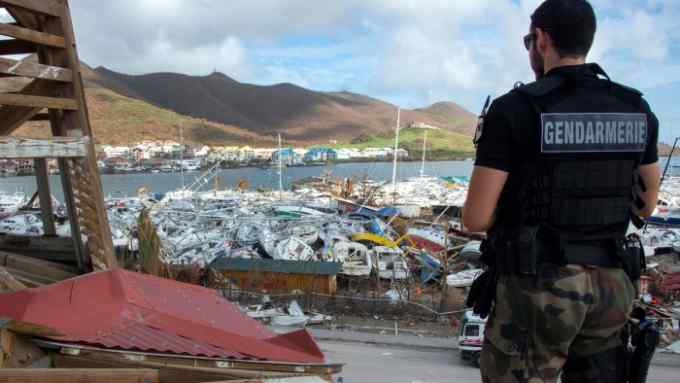China’s yacht manufacturers look abroad to fill gap in sales

Roula Khalaf, Editor of the FT, selects her favourite stories in this weekly newsletter.
Within a vast and humid hangar in southern China, workers in blue overalls, face masks and straw hats scale the hull of a 108ft superyacht that will soon be completed. The factory once catered for local demand but many boats made here are now bound for Australia, Thailand or Europe.
The drive for exports by Heysea, one of China’s largest yachtmakers, is a sign of how companies are adapting to a downturn in China’s domestic yacht market, once seen as a great prospect for the global industry.
“The domestic market is not good,” says Allen Leng, Heysea’s chairman. “We are going overseas because of a lack of certainty in the Chinese market.”
The company sold about 20 super-yachts in 2012, the height of a yachting frenzy when international boatbuilders and brokers flocked to China for lavish shows where thousands of vessels were sold to a growing business elite.
At about the same time, two Chinese companies acquired European yachtmakers Ferretti and Sunseeker, which were both in trouble following the global financial crisis. The year after, according to Chinese media reports, the domestic industry had sales of Rmb4.15bn ($630m).
But the market was driven by companies snapping up boats to act as venues to host wealthy clients and government officials. A culture of private yachting failed to emerge.
That made the sector an obvious target for the crackdown on corruption championed by President Xi Jinping.
Legitimate corporate clients still exist — Heysea was planning to host potential buyers from property group Evergrande when the Financial Times visited — but they have shrunk dramatically. Several Chinese yachtmakers went bankrupt in the downturn, according to Mr Leng. Now sales are a quarter of what they were at the peak and the company expects to sell five superyachts this year.
“It was like a high-speed train that stops because, eventually, it has to stop,” says Delphine Lignières, co-founder of Hainan Rendez-Vous, a leading Chinese boat show.
Some of China’s largest boat makers, such as Sunbird, have switched to building tourist boats or coastguard ships, which are used to assert China’s contested territorial claims in the South and East China seas. Heysea says it is selling more vessels in other Asian and Pacific markets — including one to an Australian client who wanted pole-dancing equipment aboard. “It seemed a little lowbrow,” says Mr Leng.
There are signs the domestic market is beginning to recover. A tech boom centred around the southern Chinese city of Shenzhen has created a market, he says. “Now our clients are more diverse and the proportion of genuine yachting enthusiasts has increased . . . but the overall number is still small.”

The same market is being chased by start-up Moana Yachts, which has been battling the industry downturn. Its co-founder Chris Wang, who studied boat design in New Zealand, strides across the deck of one of the company’s catamarans, sold for about $1m at a private marina near Shenzhen. “A lot of companies went bankrupt. But that was a chance for us,” he says.
The company has sold several boats this year to customers working mainly in finance and technology. “There is a change from companies to individuals who want to take family holidays,” he adds. The catamaran features a karaoke system, generally seen as a must-have for Chinese customers.
At the height of China’s yachting boom, “the [buyers] didn’t care about cost, they just wanted face. They would pay three times over the market price for foreign brands. It was highly irrational,” says Moana Yachts’ fellow co-founder Huang Jun.
Looking out at boats moored at the marina, Mr Huang says: “There are about 200 yachts here and about 70 per cent will not leave the yacht club. They were bought for face, and then buyers realised they had no use for them.”
Now the market is “more rational”, he says, “people actually want to use their boats.” But there is still a need for businesses to entertain customers. “Customers have a desire for face, they need the interiors to look good.”

Sales in China are hampered by a 44 per cent tax on imported motor yachts. Domestic manufacturers also pay hefty value added tax and duties on imported parts such as engines.
On top of this tax burden, China lacks superyacht berths. Even for smaller boats, costs in private marinas remain prohibitively high. Chinese property companies rushed to build marinas during the boom, hoping to snap up corporate customers to pay mooring fees up to Rmb1m ($150,000) a year.
But with the downturn, that model has come under strain. The Xiangshan yacht club in the province of Fujian, billed as Asia’s largest, went bankrupt in 2014. Others have cut their prices by as much as half in recent years.
“We need public marinas built by the government,” says Heysea’s Mr Leng, echoing a widespread industry view that China should encourage sailing and its associated tourist trade as part of a drive towards a more consumption-based economy. “The government is paying attention,” he adds. “We want to move [yachting] from being an elite to a middle-class thing.”
There is uncertainty, though, over whether the Communist party will support the yachting sector while the latter retains an association with corrupt elites. “It will never be a mainstream thing,” Mr Leng admits, citing official statistics that there are only a few thousand registered yachts in mainland China.
Government rules that limit to 12 the number of passengers, including staff, are also stifling growth in the charter market. “Patrol boats come to check the numbers. That’s why people buy boats and ship them to Thailand, where they can do anything,” says Mr Wang.
Mike Simpson, a broker based in Hong Kong, says: “Owners are now moving their yachts to Thailand, which is a popular Chinese tourist destination and other parts of Southeast Asia where they may have business interests or a second residence. For some who can afford a larger superyacht, the Mediterranean is an option.”
For now, it appears, the future of Chinese yachting lies largely outside China itself.

Comments